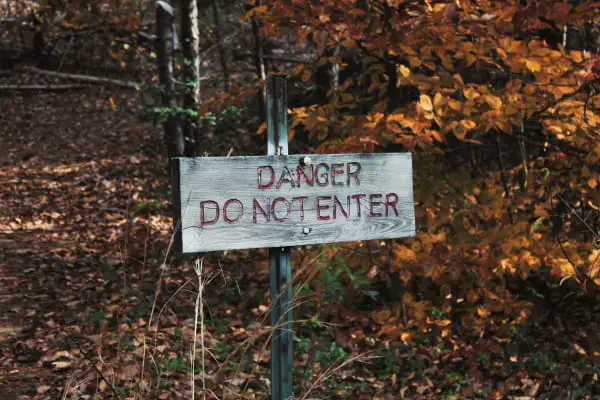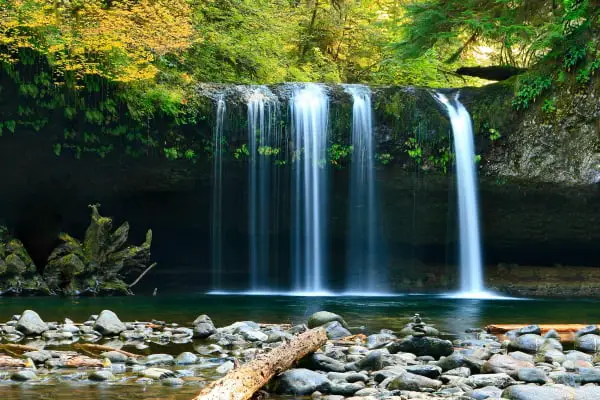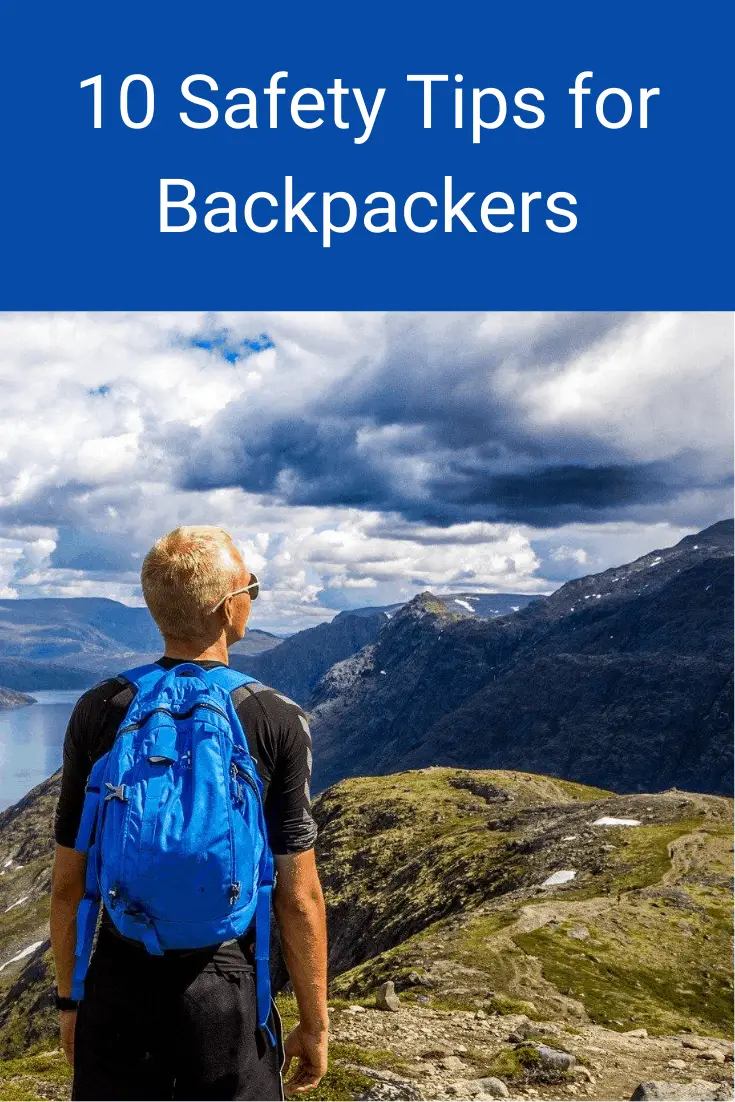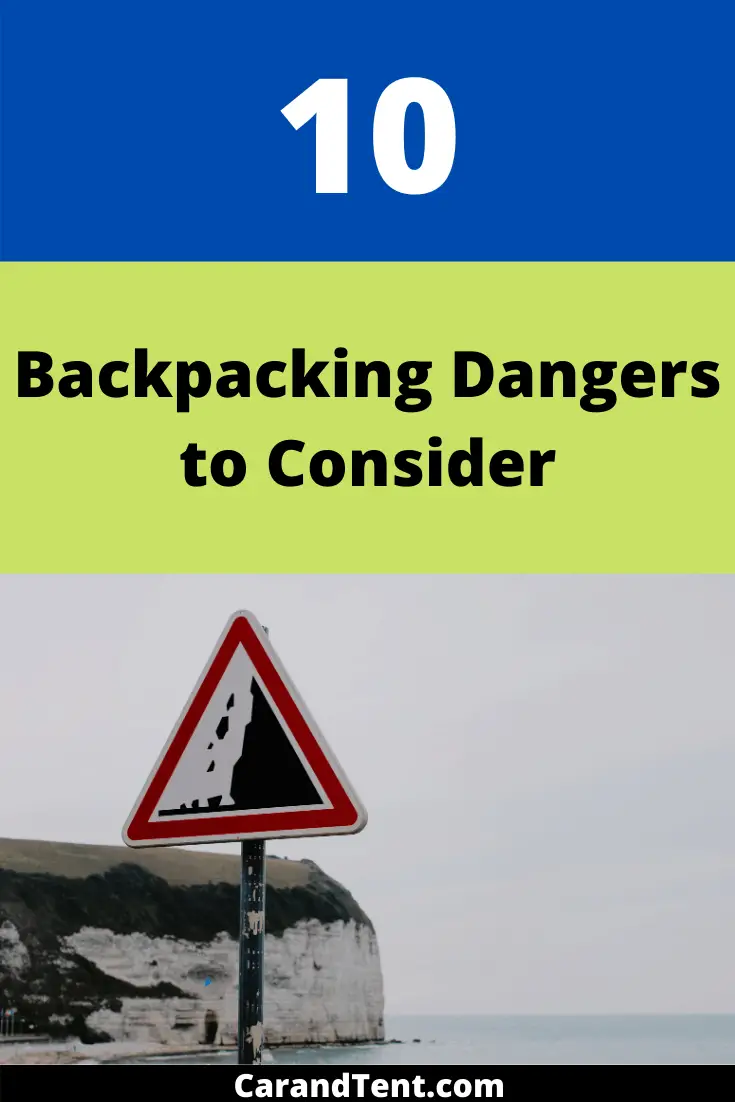
You’ve probably read the stories about hikers who got lost and died of exposure or backpackers who fell and broke their necks. Unfortunately, these things do happen and people can die or be seriously injured while backpacking.
Luckily though, these situations aren’t very common and they don’t happen as often as people might think.
Statistically, you’re much more likely to have something bad happen to you while driving to work or walking around your neighborhood. In many areas of the country, just walking through the city is often more dangerous than walking through the backcountry. It’s like the old saying goes, “I’d rather be lost in the woods than found in the city”.
So, is backpacking dangerous? Backpacking in unfamiliar territory without the right clothing, gear, and experience can be dangerous. A person can get lost, they can fall victim to bad weather, and they can fall and hurt themselves.
All this being said, it’s entirely possible to make backpacking an extremely safe activity. The best way to do this is to properly prepare yourself for every backpacking trip you go on and in this post, I’ll tell you exactly how to do that.
Table of Contents
Backpacking Dangers
Before you can protect yourself against possible backpacking dangers, you have to be able to identify what these dangers are.
Here is a list of possible dangers you might face when backpacking.
- You could get lost.
- You could suffer from exposure.
- You could fall and hurt yourself.
- You could drown.
- You could have medical issues.
- A natural disaster could affect you.
- An animal could hurt or kill you.
- A person could murder you.
- Bugs and insects could injure or kill you.
- You could have food and water issues.
1. Navigational Issues
The Boston Globe reports that 1 out of every 100,000 national park visitors ends up having to be the recipient of a search and rescue mission. This number includes people who have been lost as well as people who have been injured.
Unfortunately, data is not collected on the number of people who have gone missing so it’s hard to get an accurate number on this. However, Outside Online sources estimate that as many as 1,600 people have gone missing in national parks and were never heard from again.
I never want to become part of these statistics and I’m sure you don’t either. For this reason, you’ll want to make sure you know where you’re going and that you know where you are at all times.
To accomplish this, you’ll need to learn successful navigation practices. Be mindful of the terrain and learn the basics of terrain association. Do this and you may be able to self-rescue yourself even after you’ve lost your compass, map, and GPS system.
On top of this, you’ll want to learn how to use a map and compass and you’ll want to bring them along with you on your trip. Once you’ve mastered these techniques, you can get some additional help from GPS systems and even phone applications.
Not sure where to learn how to navigate?
Check out your local state park resources. Many state parks offer orientation courses that you can take for free. Take one and you’ll learn a useful skill, get to visit a state park, and you may even earn a new friend or two.
2. Exposure
Both hot weather and cold weather can be killers. Frostbite, hypothermia, sun poisoning, heatstroke, and dehydration can all kick in very quickly so it’s important you constantly stay on guard against them.
The best way to avoid exposure is to pack the right clothing. Remember, temperatures and weather conditions can change rapidly so you’ll need to pack for all types of weather conditions.
Also, be mindful of your surroundings during your trip. Don’t start a tough ascent late in the day as this may force you to make camp at high altitudes which could be much colder. When you’re hiking through hot and sunny areas, consider timing your hike so that most of your walking is done in the morning and in the evening so that you can avoid the hottest parts of the day.
Another thought to consider is that the wind can also be a big threat to your health. For this reason, I recommend that even cowboy campers bring along a good tarp system that they can use as a windbreak when camping.
3. Falls
Even a minor fall can end up becoming a deadly one in the backcountry. Fall in a ravine without getting hurt and you could end up getting lost.
Take a spill on some wet leaves and sprain your ankle and you might not be able to make it out of the woods before running out of food and water. At the extreme end, you could lose your balance on the side of a cliff or a waterfall and you could lose your life in an instant.
So how do you protect yourself against falls while backpacking?
One of the primary reasons people fall is that they fail to wear the proper footwear. When you’re backpacking your way up an icy hill, you really want to have footwear that can provide you with a lot of traction. In fact, you may need to have external traction devices with you to give you additional stability.
You can get the rundown on hiking footwear at https://www.carandtent.com/do-you-need-hiking-boots-the-rundown-on-hiking-footwear/
Another step you can take to help reduce the chances that you’ll fall while backpacking is to be extremely mindful of your surroundings. Assume that under every wet leaf is a slick rock and that every exposed rock you see is loose. Also, avoid getting too close to cliff edges and waterfalls. These areas may not be as stable as they look.
4. Drowning
It’s hard to find exact information on how many people drown while backpacking each year but it’s pretty telling that search and rescue missions often center around bodies of water. Fording streams and rivers are often more difficult than many people imagine and it doesn’t take a whole lot of water for a person to drown. Simply slip and fall in a few inches of water and you could drown.
Here are some interesting facts about moving water that you should consider:
- An adult male moving through waist-deep water can be knocked over by waters moving at speeds as slow as 2.6 miles per hour.
- An adult male can be knocked over by knee-deep water moving at speeds of just 4 miles per hour.
- An adult male can be knocked over by water that is just ankle-deep if it’s moving at speeds of 4.7 miles per hour.
Source: https://www.oregongeology.org/pubs/cascadia/CascadiaWinter2012.pdf
These aren’t the only conditions that could lead to you drowning on a backpacking trip either. Accidentally set up camp in a flood zone and you could end up drowning in the desert while you’re in your tent.
It doesn’t have to suddenly rain at your location for a flood to quickly affect you either. A storm several miles away could send water rushing into your campsite or over a waterfall that you happen to be taking pictures of underneath.

Here is what to do to keep yourself safe from drowning while backpacking. Be careful crossing even the smallest bodies of water, don’t set up camp in a flood zone, and stay out of waterfalls.
5. Health Issues
Let’s face it, not everyone is fit enough to go backpacking. Underlying health issues can cause people to have heart attacks and strokes while backpacking.
Backpacking is a vigorous exercise and many people really should be cleared by their physician before they decide to embark on a backpacking journey. The obvious way to prevent issues such as these is to get a physical checkup and to get in great shape before your trip.
Also, consider taking things slow. Sometimes a 3-mile backpacking trip can be just as fun as a 30-mile backpacking trip. Go slow, take frequent breaks, and don’t take on any backpacking challenges until you’re body is ready for them.
6. Natural Disasters
Mother nature loves us. She provides us with food, water, shelter, and everything we need to live. Unfortunately, mother nature also hates us. She rolls rocks down on us, she hits us with landslides, she burns us with forest fires, she hits us with avalanches, and she’s even been known to strike us down with lightning from time-to-time.
Avoiding Avalanches, Landslides, and Falling Rocks
When you’re out backpacking, you’ll want to watch out for weak slopes and falling rocks. Heavy rains in dry areas tend to be the cause of this but earthquakes and even dying vegetation can cause slopes to become weak enough to cause landslides and avalanches.
Avoiding Forest Fires
Avoid causing forest fires by practicing proper fire safety rules. Also, evacuate any areas with fire activity as soon as you hear news of them.
Forest fires can be unpredictable and they can spread rapidly so you’re better off ending your backpacking trip early. If the forest is still there the next time you want to go backpacking, you can visit it again. If it isn’t there any longer, you’ll be glad you evacuated when you did.
Avoiding Lightning
Just because Metallica likes to “ride the lightning”, doesn’t mean you should too. Lightning strikes are often deadly and survivors of lighting strikes note that they’re, “quite painful”.
Lightning likes to strike the highest point. Knowing this, you can drastically reduce your chances of being hit by lightning by staying off of mountains during thunderstorms. Just be careful not to set up camp in a flood plain as you ride out the storm at the bottom of the mountain.
7. Animals
Humans have proven over the years that we’re much more dangerous to animals than they are to us. As a result, most animals will try to avoid you as much as possible.
This being said, bears, mountain lions, snakes, alligators, and a whole assortment of other animals you might not think of can harm you or even end your life out on the trail. Luckily, most predatory animals can be avoided by using proper food etiquette and by bringing personal protection.
Other animals, typically won’t bother you at all as long as you don’t bother them. A good rule of thumb is to just steer clear of any animal you see.
Oftentimes, the animals you least suspect can end up being the most dangerous. Remember the crocodile hunter didn’t get eaten by a crocodile and even Andrew Ucles, (seen in the video below), was killed by a little porcupine.
8. People
The number of homicides committed in state and national parks is incredibly low. Statistically, you’re much safer from other people on a backpacking trip than you are on a walk through your local town.
This being said, a statistic is a statistic and you certainly don’t want to become one. Be friendly to, but cautious of strangers. If you get a “bad vibe” from somebody don’t be ashamed to quickly make your leave of them.
9. Bugs and Insects
Did you know that Lyme disease isn’t the only tick-borne illness in the United States? According to the CDC, tick-borne pathogens other than Lyme disease include babesiosis, ehrlichiosis, Rocky Mountain Spotted Fever, anaplasmosis, Southern Tick-Associated Rash Illness, Tick-Borne Relapsing Fever, tularemia, Colorado tick fever, Powassan encephalitis, and Q fever.
If Lyme disease affects over 30,000 people a year, how many people are affected by all of these other tick-related diseases?
These aren’t the only little creatures that can harm you either. Spiders, scorpions, and mosquitos can all kill you as well.
Because of all of this, you’ll need to be on guard against bugs and insects. Protect yourself with bug spray and clothing and be sure to keep an eye on your body for embedded ticks. Getting the tick off of you within the first 24-hours will dramatically reduce its chances of being able to infect you with a deadly disease.
10. Food and Water
We all know that in the backcountry, running out of food and water can kill you. But, did you ever stop to consider the fact that food and water itself could kill you?
Backcountry water can contain bacteria, viruses, giardia, and cryptosporidium. These four things will make you sick and could even lead to your death. For this reason, you’ll want to avoid drinking water that has not been purified.
If you’re unsure of how to purify water, check out my post on backpacking water filters and water treatment tips.
Also, be careful of what you eat in the backcountry. I enjoy scavenged backcountry blueberries and raspberries just as much as the next backpacker but I never eat anything I can’t easily identify. A poisonous berry or a bad mushroom could easily put an end to an otherwise good trip.
In Closing
Backpacking is dangerous but so is everything else. Reduce your chances of becoming a victim while backpacking by packing the right gear, doing the right things, and making the right choices and your backpacking trip will be just as dangerous or safe as anything else you like to do.



